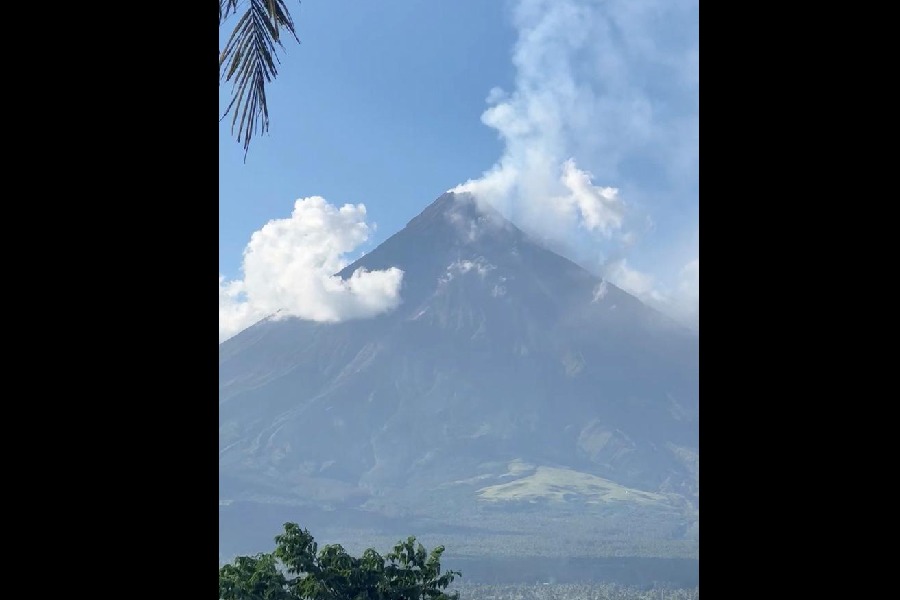Authorities in the Philippines on Friday began evacuating around 10,000 people living near the Mayon Volcano after volcanic earthquakes and hundreds of rockfall events were detected.
Mount Mayon is situated in the eastern province of Albay, some 330 kilometers south of the Filipino capital of Manila.
The Philippine Institute of Volcanology and Seismology (Phivolcs) said that the volcano was "in a relatively high level of unrest" and that a "hazardous eruption is possible within weeks or even days."
"Fair crater glow and incandescent rockfall shed from new fluidal lava at the summit of Mayon Volcano were also observed last night," the institute said in a Friday advisory.
Images shared on social media showed an orange glow coming from the volcano.
Alert level raised
The decision was made to raise the alert level to 3 on a scale of 5, and the agency recommended that "the 6-km (3.7-mile) radius Permanent Danger Zone (PDZ) be evacuated."
"As much as possible, I want to maintain the zero casualty record of our province, so ... I hope we'll be able to evacuate them to safer places," Albay Governor Edcel Greco Lagman said during an emergency meeting on Thursday.
The Mayon Volcano stands at a height of 2,462-metre (8,077-foot) and is a popular drawcard for visitors to the region due to its conical form.
It is considered to be the Philippines most active volcano — last erupting in January 2018. There have also been no less than 50 eruptions in the last 500 years.
The Philippines is part of the so-called "Ring of Fire" in the Pacific Ocean, where volcanic activity and earthquakes remain common.
The most destructive eruption took place in 1814, when 1,200 people were killed and the town of Cagsawa was buried beneath volcanic mud.
More recently, in 1991, the eruption of Mount Pinatubo, around 100 kilometers northwest of Manila, left more than 800 people dead.










